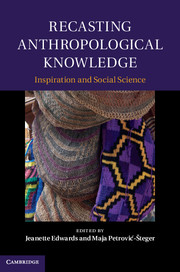Book contents
- Frontmatter
- Contents
- Contributors
- Acknowledgements
- 1 Introduction
- 2 Writing the parallax gap
- 3 Too big to fail
- 4 ???Hybrid custom??? and legal description in Papua New Guinea
- 5 Entomological extensions
- 6 Kinship and the core house
- 7 Invisible families
- 8 Knowledge in a critical mode
- 9 Spools, loops and traces
- 10 Inspiring Strathern
- Bibliography
- Index
5 - Entomological extensions
model huts and fieldworks
Published online by Cambridge University Press: 07 September 2011
- Frontmatter
- Contents
- Contributors
- Acknowledgements
- 1 Introduction
- 2 Writing the parallax gap
- 3 Too big to fail
- 4 ???Hybrid custom??? and legal description in Papua New Guinea
- 5 Entomological extensions
- 6 Kinship and the core house
- 7 Invisible families
- 8 Knowledge in a critical mode
- 9 Spools, loops and traces
- 10 Inspiring Strathern
- Bibliography
- Index
Summary
On the outskirts of Lupiro, a village in south-east Tanzania, four huts occupy a cleared plot of low-lying rice field. Though no different in size and shape from the homes clustered above them, their design is distinctive. The huts’ walls are made of mud-coated canvas and their roofs of corrugated iron, are lined with thatch. Erected on wooden platforms raised on galvanised piping, the huts appear to hover; their stilt-foundations are anchored in water-filled metal moats. Mesh boxes hang along the space between the roof and the wall. Empty during the day, the huts hum with activity at night. In the early hours of the morning, the only light for miles across the Kilombero River Valley is the faint glow radiating from their screened windows.
The huts are an experimental extension of the Ifakara Health Institute (IHI), a well-equipped laboratory, training facility and district health centre located 24 kilometres west across the river. Though a novelty in Lupiro, experimental huts are classic tools of entomological research. Designed by British researchers in Kenya in the 1940s, they have been used primarily to study the flight patterns of malaria vectors – mosquitoes. An intermediary between the village and the laboratory, these semi-field stations enable scientists to track disease transmission as a dynamic relationship between natural and social landscapes. Their architecture serves a dual purpose: to isolate ‘natural’ mosquito behaviour on the one hand and to represent ‘typical’ village conditions on the other. The huts’ location plays an important role in that compromise. Building where mosquito density is high over a long season of activity enhances experimental sensitivity; the greater the number of samples collected, the more predictive the dataset of mosquito behaviour. But stray too far from human settlements and those findings lose epidemiological traction. Hybrid knowledge spaces, the huts’ domestic camouflage enables the entomological particularities captured beneath their roofs to be read as patterns operating on the level of an ecosystem (Henke 2000; Kohler 2002; Gieryrn 2006).
- Type
- Chapter
- Information
- Recasting Anthropological KnowledgeInspiration and Social Science, pp. 70 - 87Publisher: Cambridge University PressPrint publication year: 2011
- 15
- Cited by



